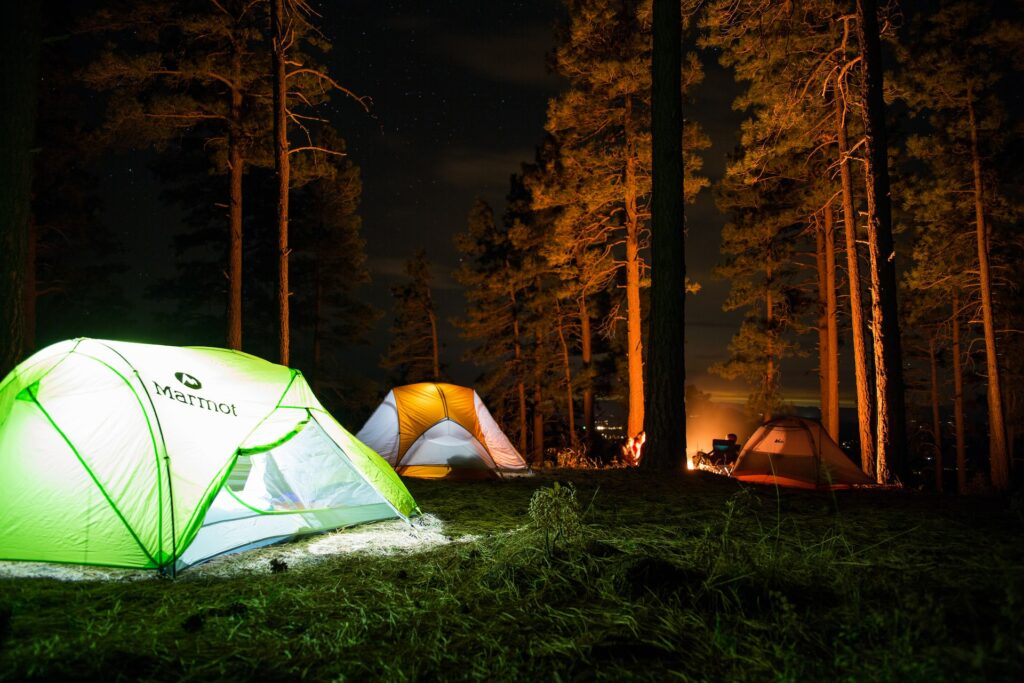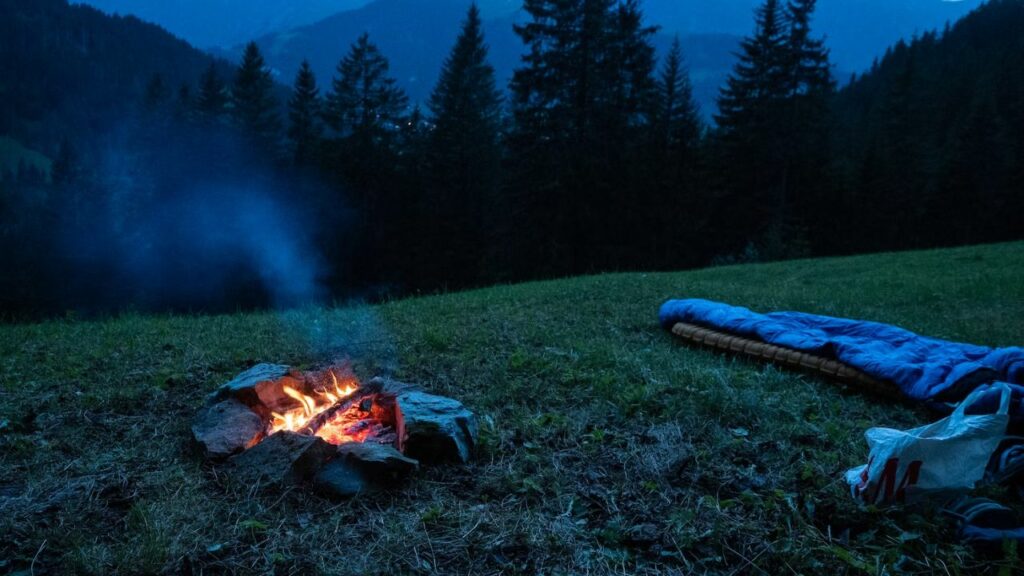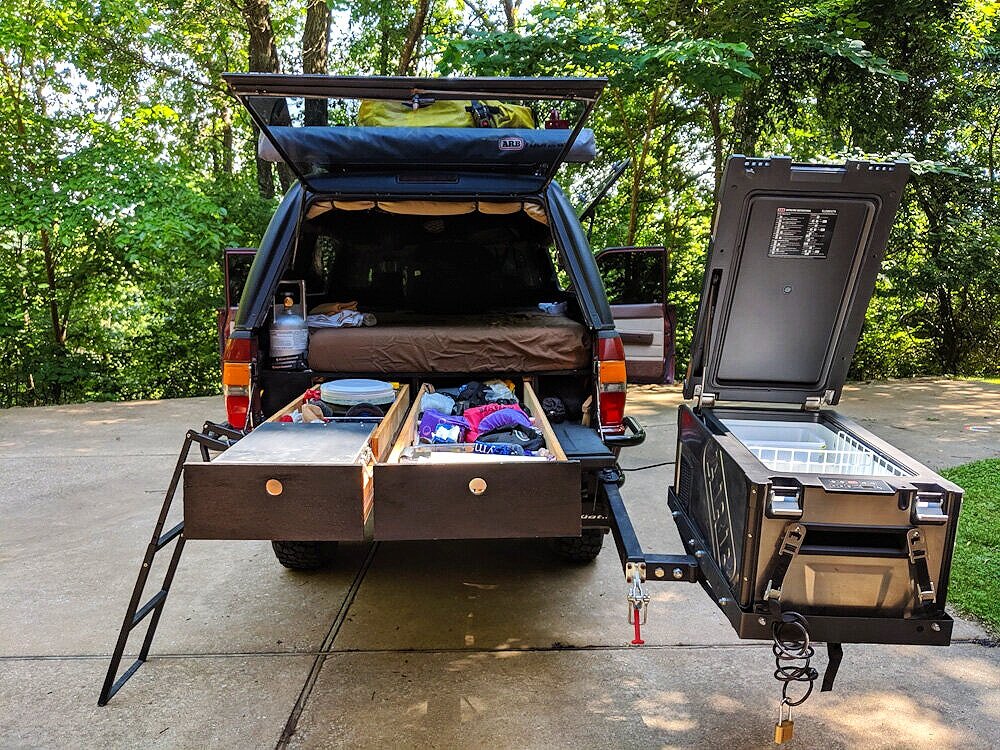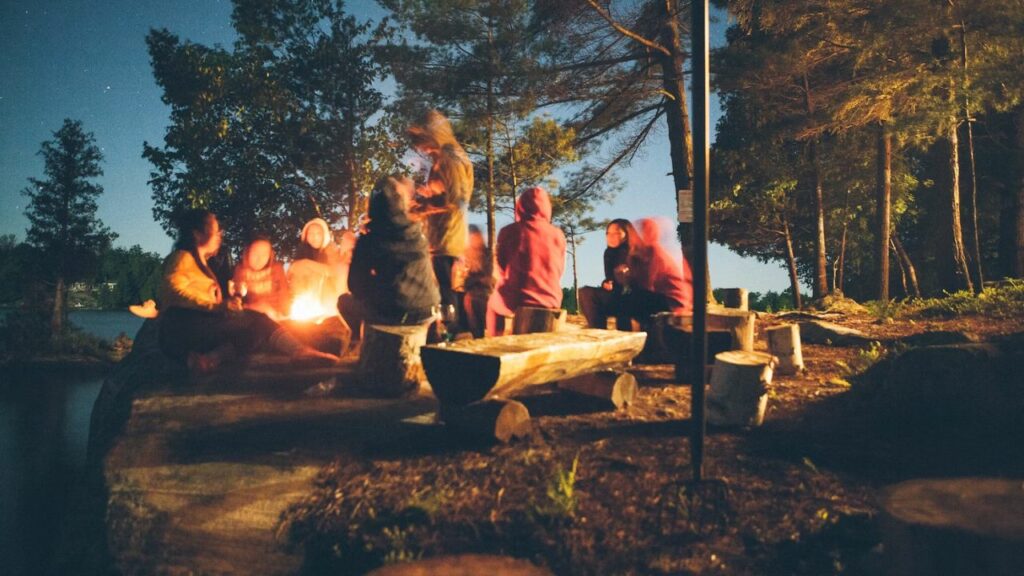If you’re an adventurous soul who loves camping on a budget, you’re in for a treat. Today, I’m gonna dive into the exciting world of free camping in the United States.
The catch of free camping goes beyond just saving money. It offers an unparalleled opportunity to connect with nature on a deeper level, away from the hustle and bustle of crowded campgrounds.
You get to explore USA’s hidden gems and lesser-known corners while forging unforgettable memories. Okay, enough praise. What exactly is free camping?
Free camping, also known as dispersed camping or boondocking, refers to camping in areas where overnight stays are allowed without charge. These areas include national forests, Bureau of Land Management (BLM) lands, state and county parks, wildlife management areas, and certain private lands.
Finding the perfect free camping spot requires a little planning and research. I’m here to guide you through the process.
Free Camping Options in the US – What You Must Know
The concept behind free camping is simple: find a suitable spot, set up your tent, park your camper or RV, and enjoy the beauty of nature.
It’s about embracing the simplicity of outdoor living and immersing yourself in the natural wonders surrounding you.
When it comes to free camping, there are several options to consider.

1. Dispersed Camping
It refers to camping in undeveloped areas such as national forests, BLM lands, and certain wilderness areas. Dispersed camping allows for a more secluded and immersive experience as the nature around is mostly untouched.
2. Boondocking
The RV community uses this term to describe camping in remote or off-grid locations. Boondocking is basically finding a spot you like to park your RV or camper and stay overnight without access to amenities like water or electricity hookups.
3. Overnight Parking
While it may not offer the same level of immersion in nature as dispersed camping or boondocking, it can be a convenient option for road trips or a quick rest stop for the night.
How to find free camping in the US?
As far as my experience goes, you have 3 safe options for finding free camping in the US: areas under BLM, state and country parks, and areas under wildlife management.
Conduct thorough research before heading out on your free camping trip. Start by identifying the areas or states you’re interested in exploring.
I start by checking out reliable resources like government websites and community-trusted forums such as Reddit. Here, you can get a quick insight into the availability of free camping spots, regulations, and any noteworthy restrictions.
1. National Forests and Bureau of Land Management (BLM) Lands
BLM lands are often vast and diverse, providing ample space for you to set up camp. From towering mountains to scenic desert landscapes, these lands boast breathtaking beauty and countless adventures waiting to be discovered.
Rules and Regulations: While national forests and BLM lands offer freedom and flexibility, you must familiarize yourself with each area’s specific rules and regulations. Some districts may restrict the maximum length of stay, camping locations, or the need for permits in certain areas.
2. State and County Parks
While state and county parks typically charge camping fees, some offer free camping options in designated areas. It might take some elbow grease to research and find out which parks offer free camping in the states you plan to visit.
For instance, Texas provides free camping in certain state parks during specified times of the year, while Oregon offers free camping in specific state forests.

3. Wildlife Management Areas and Wildlife Refuges
These lands are managed by state wildlife agencies or the U.S. Fish and Wildlife Service. And they’re a completely untethered treasure trove for free camping.
It’s important to note that rules here might be stricter than state parks and BLM lands. Check the required guidelines and permits before camping in wildlife management areas or refuges.
Some areas may require advanced reservations or permits, especially during peak seasons or for specific activities such as hunting or fishing.
US States with Awesome Free Camping Options
1. Montana
Montana, the “Treasure State,” is the best state for free camping due to its vast public lands and stunning wilderness. With national forests, BLM lands, and state parks, there are plenty of opportunities for dispersed camping and enjoying the natural beauty of the state.
Popular areas for free camping in Montana include the Flathead National Forest, Lewis and Clark National Forest, and BLM lands near Yellowstone National Park.
For specific areas or parks, you should explore the Kootenai National Forest or Charles M. Russell National Wildlife Refuge which is known for its primitive camping opportunities.
2. Utah
Utah is a paradise for outdoor enthusiasts and offers fantastic options for free camping. You’ll be amazed with its breathtaking red rock landscapes.
Popular free camping include the Dixie National Forest, Fishlake National Forest, and BLM lands near Moab. For specific parks, you can explore the Manti-La Sal National Forest or the BLM lands near Capitol Reef National Park.
3. Colorado
The state allows free camping in San Isabel National Forest, and BLM lands near popular destinations like Durango and Telluride.
You can also explore the White River National Forest, where you can find dispersed camping in picturesque mountain settings.

4. Wyoming
Wyoming, with its vast open spaces and majestic mountains, provides incredible opportunities for free camping. You must visit the Bridger-Teton National Forest, Shoshone National Forest, and BLM lands near the Wind River Range.
5. Arizona
Arizona, known for its stunning desert landscapes and iconic landmarks, offers several options for free camping. Popular areas for free camping include the Coconino National Forest, Tonto National Forest, and BLM lands near Sedona.
If you’re looking for something specific, you can explore the Kaibab National Forest near the Grand Canyon or the Cabeza Prieta National Wildlife Refuge.
Honorary Mention: Other states with awesome free camping options include New Mexico, California and Texas.
Important Considerations and Etiquette
As you embark on your free camping journey, it’s crucial to keep in mind several important considerations and practice proper camping etiquette. You must follow these guidelines to ensure a safe, enjoyable, and sustainable camping experience.
1. Leave No Trace Principles
These principles include leaving your campsite as you found it, properly disposing of waste, minimizing campfire impacts, respecting wildlife, and being considerate of other campers.
2. Safety and Security
Choose campsites that offer adequate lighting and are known to be safe. Inform someone about your camping plans, including your expected return time and location.
3. Respect for Rules and Regulations
Familiarize yourself with the rules specific to the area you plan to camp in, including any permits or camping restrictions.
4. Consideration for Other Campers
Keep noise levels to a minimum, especially during quiet hours, to allow everyone to enjoy the tranquility of nature. Respect the privacy and personal space of fellow campers by setting up your campsite at a reasonable distance.
5. Fire Safety
Use existing fire rings or designated fire pits when available, as they are designed to contain the fire. Keep fires small and manageable, and always fully extinguish them before leaving the campsite or going to sleep.
6. Water and Waste Management
Pack out all trash and dispose of it in designated receptacles to prevent littering and protect wildlife.
When nature calls, follow proper waste disposal practices, such as digging catholes and burying human waste at least six inches deep and 200 feet away from water sources.

Frequently Asked Questions (FAQs)
1. Is free camping legal in the US?
Free camping is generally allowed in designated areas such as national forests, Bureau of Land Management (BLM) lands, and some state parks. However, it’s important to research and understand each location’s specific rules and regulations to ensure compliance.
2. Can I camp for free in national parks?
While some national parks offer limited free camping options, most have established campgrounds that require a fee. It’s advisable to check the official website or contact the park authorities for information on camping options and fees.
3. How do I find free camping spots?
In general, research is key to finding free camping spots. Utilize government websites, camping apps, online forums, and guidebooks dedicated to free camping. These sources provide valuable information on locations, regulations, and user experiences.
4. Are free camping spots equipped with amenities?
Free camping spots often need more amenities like water, electricity, and restroom facilities. It’s important to be prepared and bring necessary supplies, including water, food, a camping stove, and appropriate equipment for waste disposal.
5. Are free camping spots crowded?
Generally, the density of crowding at free camping spots can vary. Some popular areas may experience high demand during peak seasons, weekends, and holidays. Planning your trip during less busy times or exploring lesser-known spots can help you find less crowded camping areas.
6. Can I have a campfire at free camping spots?
Campfire regulations vary by location and are often subject to weather and fire danger conditions. Some areas may have restrictions, while others may provide designated fire rings or require the use of portable stoves. Always check local regulations and guidelines before starting a campfire.

